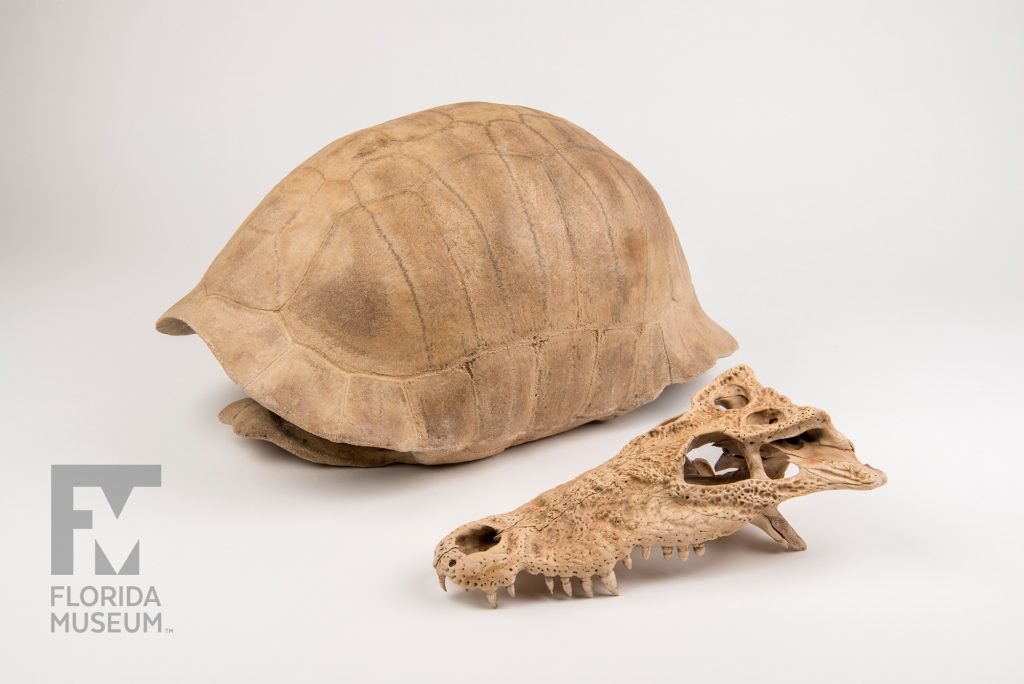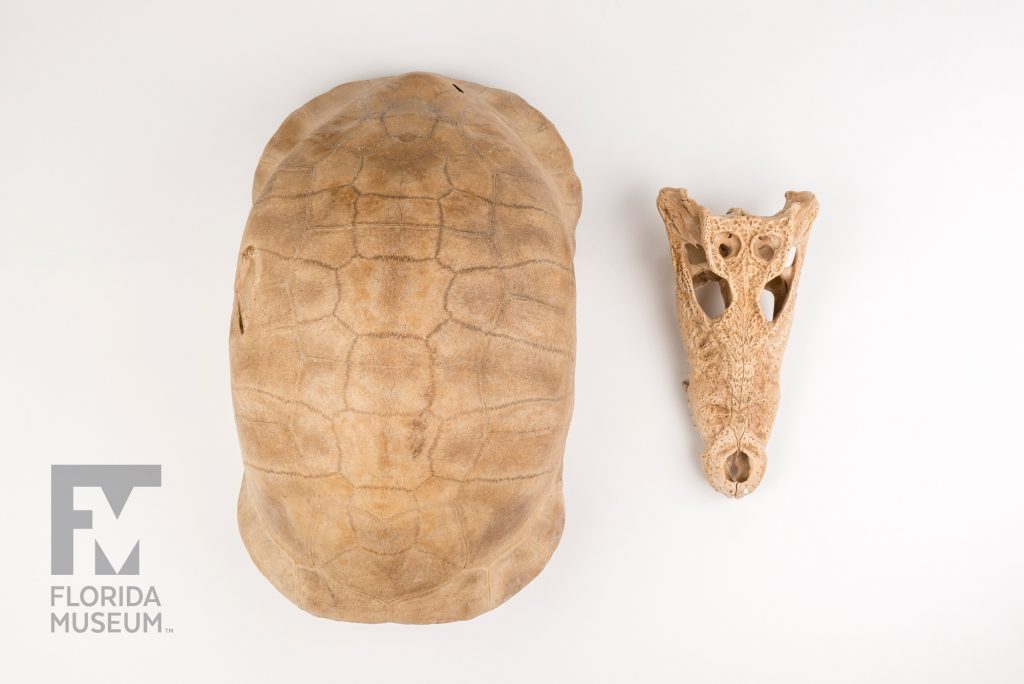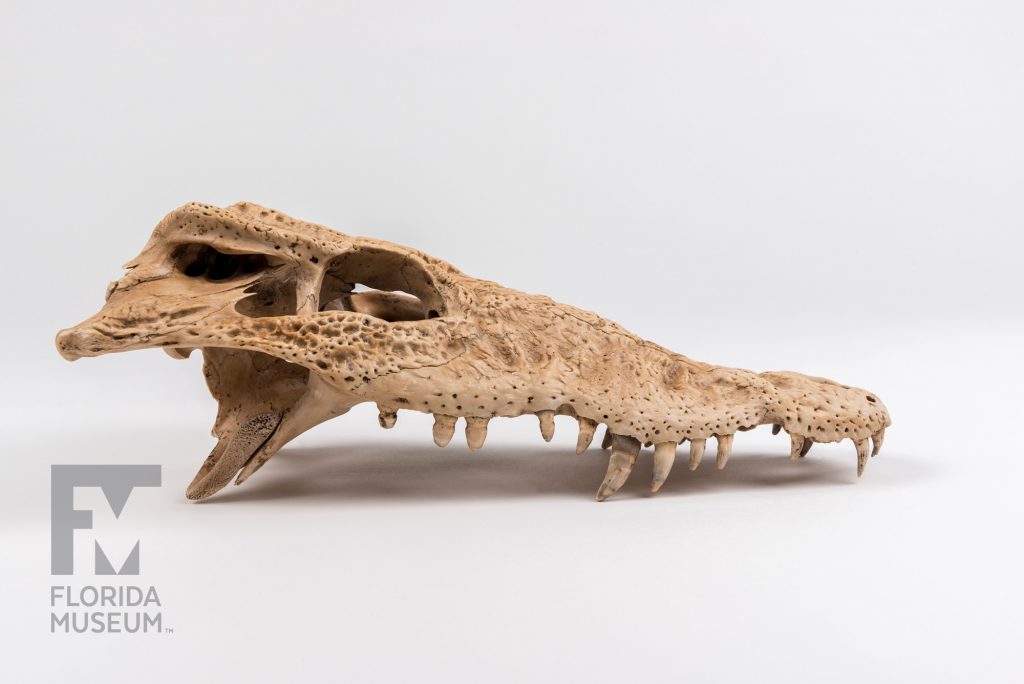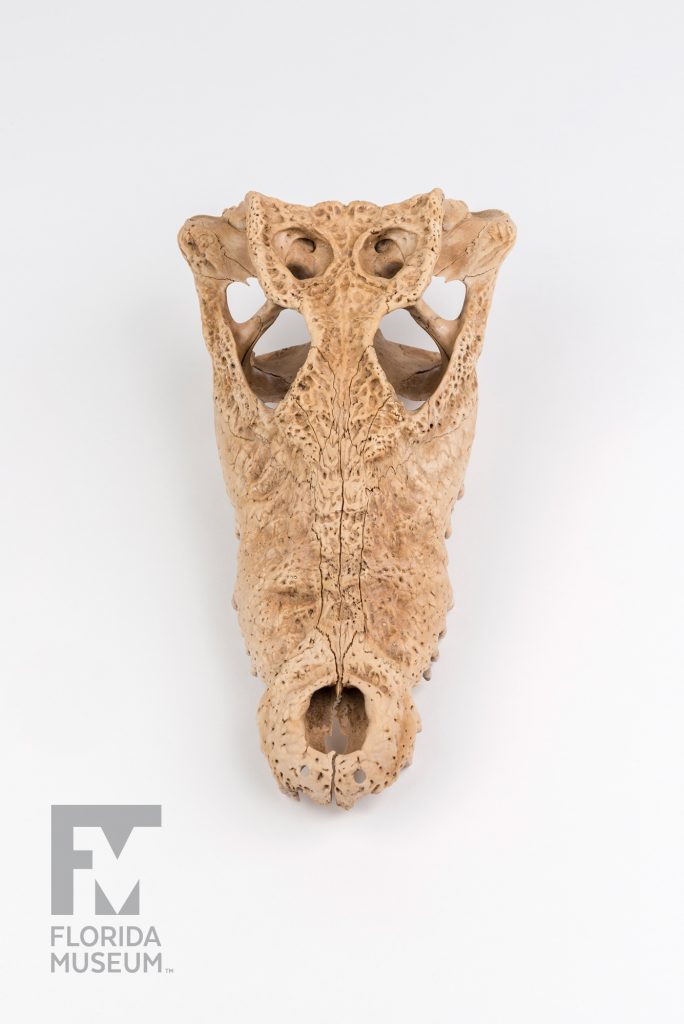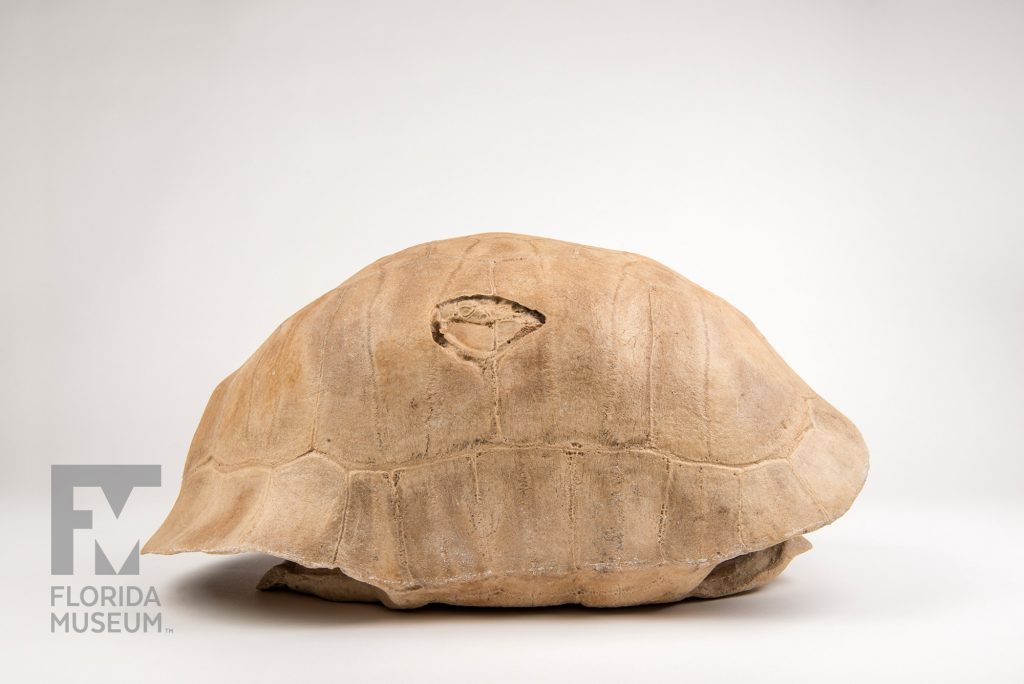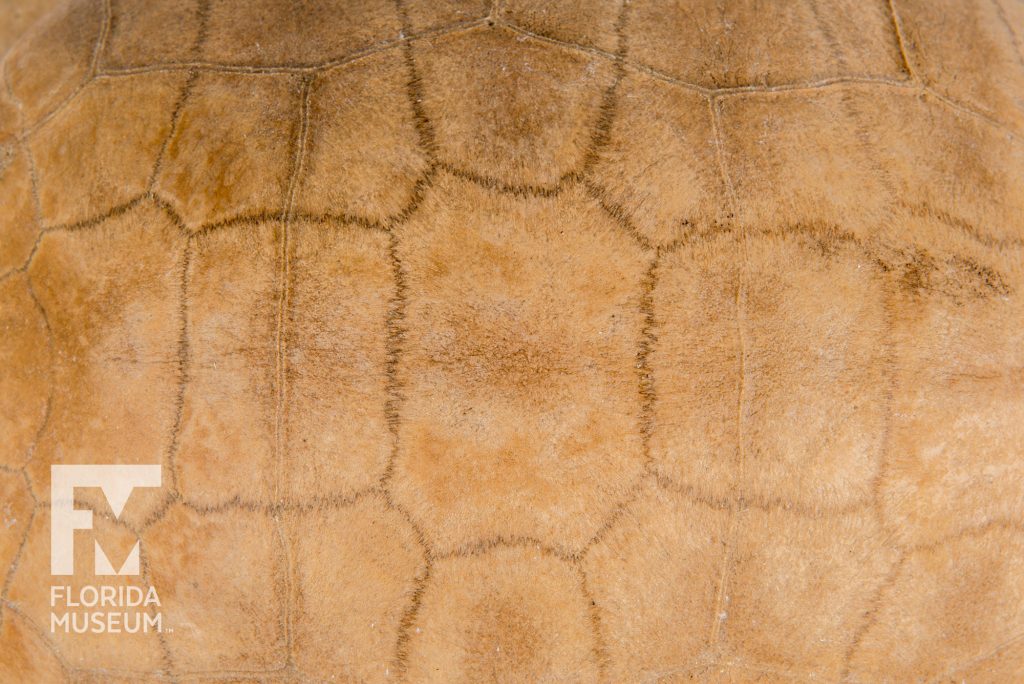When these large reptiles roamed the island, the climate and environment was similar to today’s. They went extinct after humans arrived on the island, most likely from hunting for food or protection.
Summary
From Abaco, Bahamas
Lived ~1000 years ago
Albury’s Tortoise Shell (Chelonoidis alburyorum; extinct)
Cuban Crocodile Skull (Crocodylus rhombifer; extinct on island)
Collection
Story
Beginning about 10 years ago, a few scientists at the Florida Museum of Natural History and I, along with different Bahamian scientists, got heavily involved in retrieving fossils from blue holes in the Bahamas, especially on the island of Abaco. The initial discovery of these fossils was made by scuba diver Brian Kakuk, who noticed when he dove down, got about 60-70 feet deep in this blue hole — that was completely dark there was no light — just lying on the surface were entire skeletons of extinct species of tortoises and crocodiles. This was a fossil discovery second-to-none in the West Indies as far as how well-preserved these entire skeletons were.
So working with Brian and other scuba divers, we’ve retrieved a selected sample of these large fossils, and the beauty of the fossils is that we can do all sorts of research on them that normally can’t be done with fossils. In other words, they still have their organics left in the bones so we can radiocarbon date them very accurately; we can look at the stable isotope signatures of this extinct tortoise and crocodile in order to reconstruct their diet; and these sorts of finds have really revolutionized what we know about evolution of large animals in the Bahamas, and by default, throughout the West Indies. We’ve learned that this crocodile was in fact a terrestrial, not an aquatic predator, so that’s pretty different than crocodiles in continental situations. We learned that both the crocodile and the tortoise became extinct about a thousand years ago which is roughly when the first people arrived in the Bahamas.
David Steadman
Curator, Ornithology*
Florida Museum of Natural History
Additional Information
Blue Hole
Blue holes are round marine caverns or sinkholes with steep walls that are filled with fresh and salt water. Because they have poor water circulation and lack oxygen below a certain depth, blue holes don’t support a wide variety of life larger than bacteria.
Exhibit
On display Sept. 23, 2017-Jan. 7, 2018, Rare, Beautiful & Fascinating: 100 Years @FloridaMuseum celebrated the Museum’s rich history. Each Museum collection was asked to contribute its most interesting items and share the stories that make them special. Though the physical exhibit is closed, this companion website remains online, providing an opportunity to experience the Florida Museum’s most treasured specimens.
Exhibit Area: Objects Tell Stories
Theme: Humans Cause Change
 Want to see more? Explore more than 300 breathtaking color photos of plants, animals, fossils and cultural heritage materials from the Florida Museum of Natural History’s collections in the award-winning book All Things Beautiful available from the University Press of Florida.
Want to see more? Explore more than 300 breathtaking color photos of plants, animals, fossils and cultural heritage materials from the Florida Museum of Natural History’s collections in the award-winning book All Things Beautiful available from the University Press of Florida.
*This title was accurate at the time the exhibit was on display in 2017. Please visit the collection website to verify current staff and student information.
